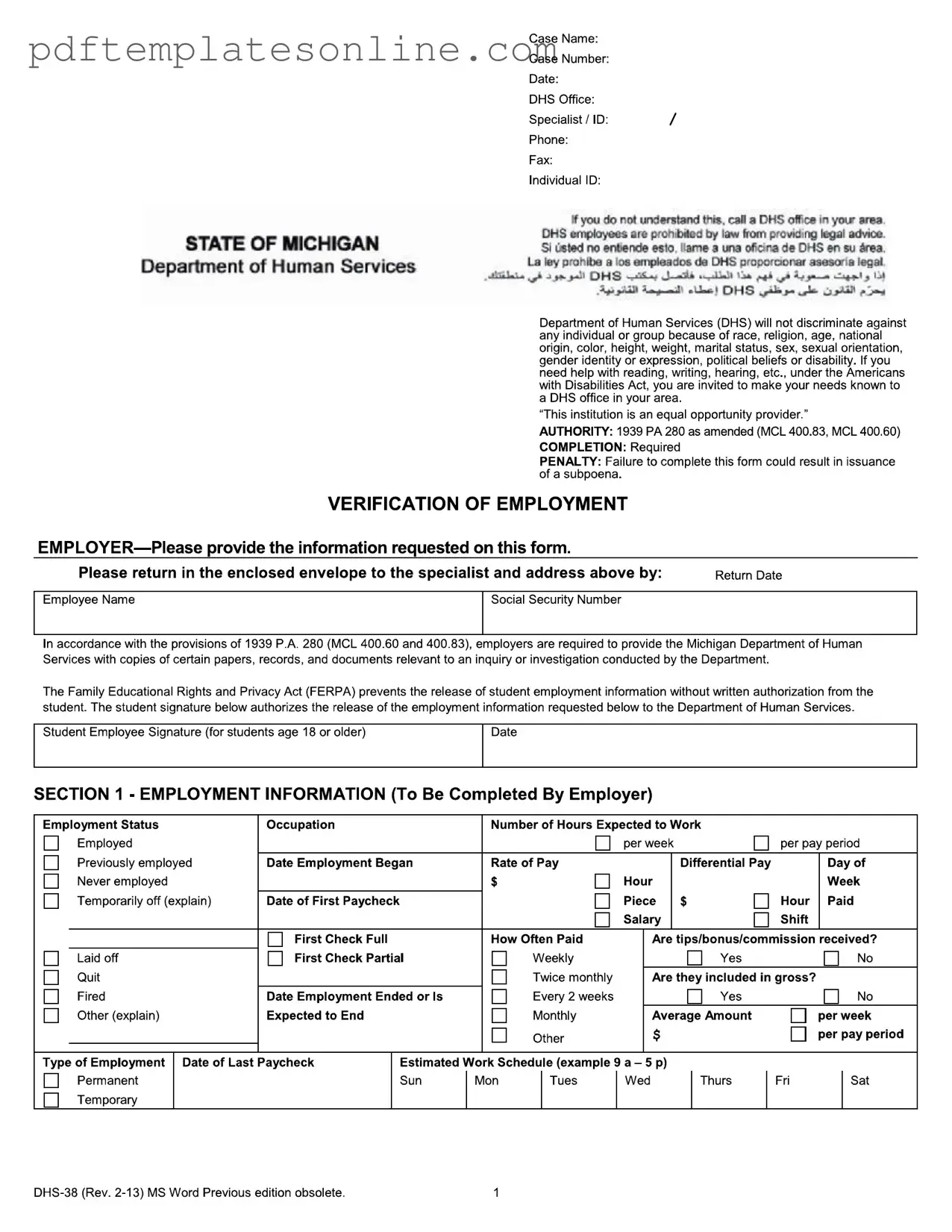When filling out the Dhs 38 form, many individuals make common mistakes that can lead to delays or complications. One frequent error is failing to provide complete information. Each section of the form requires specific details, and missing even one item can result in the form being returned for corrections.
Another mistake is incorrect dates. Applicants often enter the wrong dates for employment or benefits, which can create confusion. It is essential to double-check all dates to ensure accuracy. Similarly, people sometimes misreport their employment status. Selecting the wrong option, such as "employed" instead of "previously employed," can lead to significant misunderstandings.
Inaccurate income reporting is also a common issue. Individuals frequently underestimate or overestimate their earnings, which can impact eligibility for assistance. Providing the correct gross income is critical. Additionally, some applicants neglect to include tips or bonuses in their income calculations. These amounts can be significant and should always be accounted for.
Another area of concern is the failure to sign the form. Without a signature, the form is not valid. It’s also important to ensure that the signature matches the name provided on the form. Incomplete sections, especially regarding insurance or retirement plans, are often overlooked. Providing all requested information in these areas is crucial for a complete application.
Additionally, individuals sometimes fail to read the instructions thoroughly. Misunderstanding what is required can lead to errors. It’s essential to follow the directions carefully. Lastly, some applicants submit the form without checking for clarity and legibility. Illegible handwriting can cause processing delays and misunderstandings.
Taking the time to review the Dhs 38 form before submission can prevent these common mistakes. Accuracy and completeness are key to ensuring a smooth application process.
